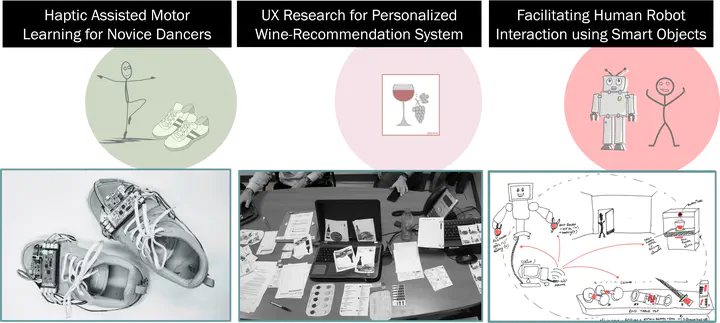Foot-based Haptic Interfaces for Numeric Information Delivery and Dance Learning

Abstract
Humans are skilled in sensing their surroundings via touch; they perceive variations in pressure, texture, and force through sensory receptors. Haptic interfaces leverage this ability and use the skin as a medium for communication. Among other body locations, the feet offer an unobtrusive site for communication through haptics. Owning to their richness of sensory receptors and role in locomotion, they can be used either as a location for displaying semantic information or conveying guidance cues relevant to any physical activity. Several foot-based haptic interfaces have been proposed for applications such as navigation, fitness-tracking, and dance learning. However, they are limited by the range of information they can communicate effectively. Most of these designs use multi-actuator placement on the plantar surface of the feet, which leads to the propagation of haptic stimuli, hence reduced recognition rate. For effectively conveying a broad set of information with low cognitive load and a high recognition rate, there is a need to employ well-separated sites for actuator placement. The toes have similar anatomical and neurophysiological properties such as fingers, hence, they could serve as a favorable location. Hence, as the primary focus, this thesis explores the usability of toes as a ten-unit tactile display. Toes have not been explored earlier for haptic communication due to their reported susceptibility to erroneous perception. We hypothesize that this can be mitigated by careful design of the tactile encoding, increasing the perceptual accuracy of stimuli rendered on toes. To evaluate our approach, we first performed a perception study on the fingers and toes and later tested the encoding for conveying numbers. The results prove that the ten-unit tactile toe display is viable for conveying information. Foot-based haptic interfaces can not only serve as a discreet information display but can also facilitate the process of learning any physical activity. Although several activities can benefit from haptic-assisted guidance, we focused on dance. Novice dancers often face difficulty in learning fundamental elements of dance movements, such as spatial footwork, rhythm, and weight transfer, which could be resolved by personalized guidance through foot-based haptic interfaces. Hence, as the secondary focus, this thesis presents a novel design of hapticaugmented shoes for ance learning and discusses the overall development of a foot-based haptic guidance system.